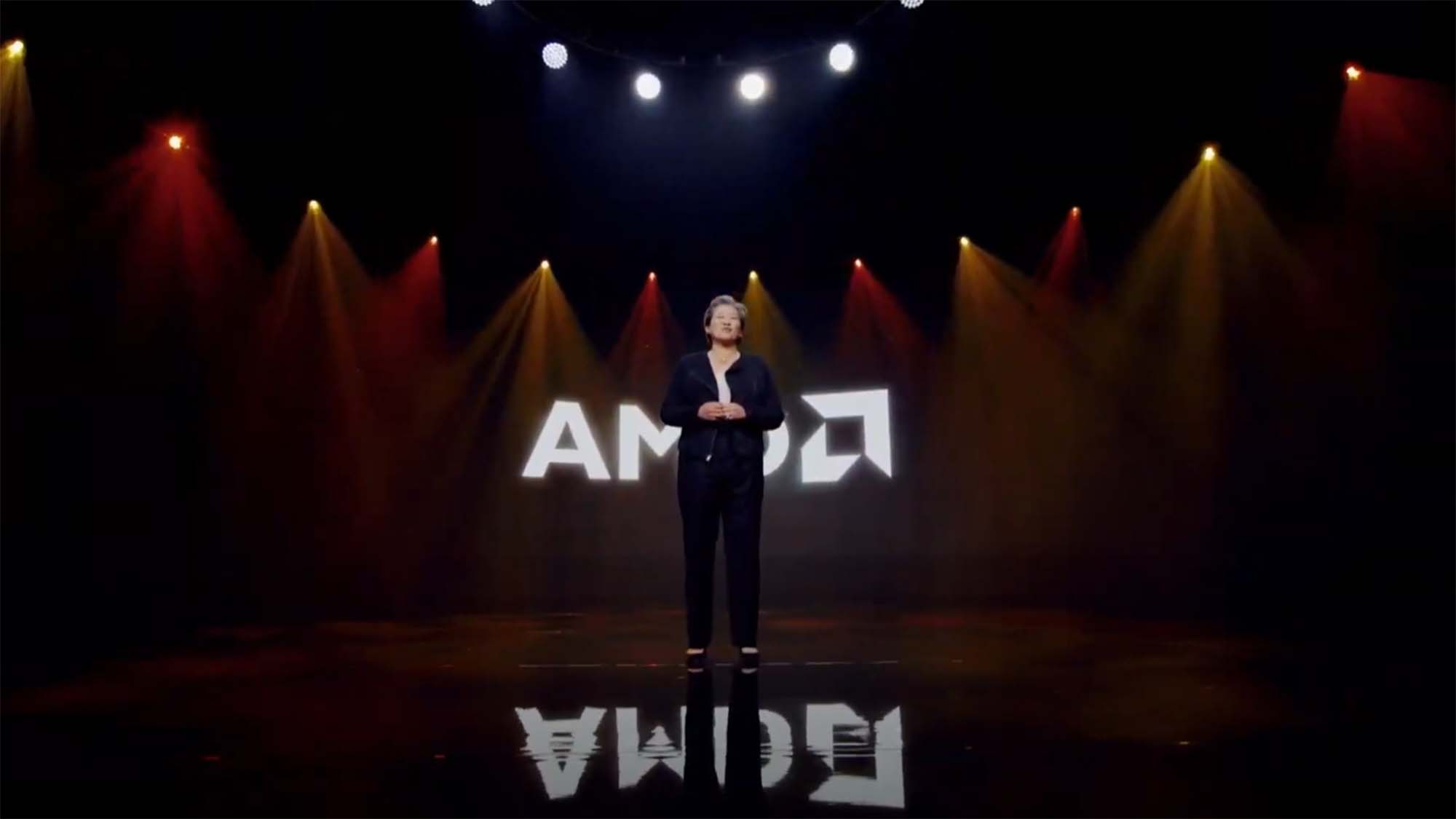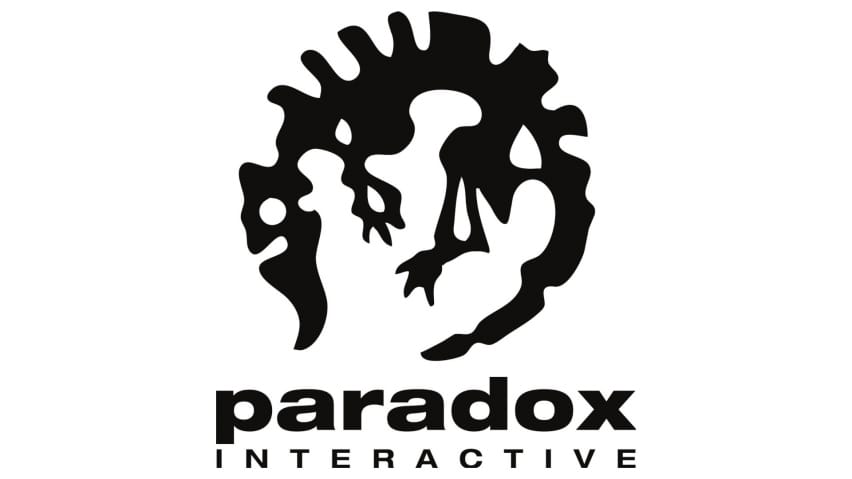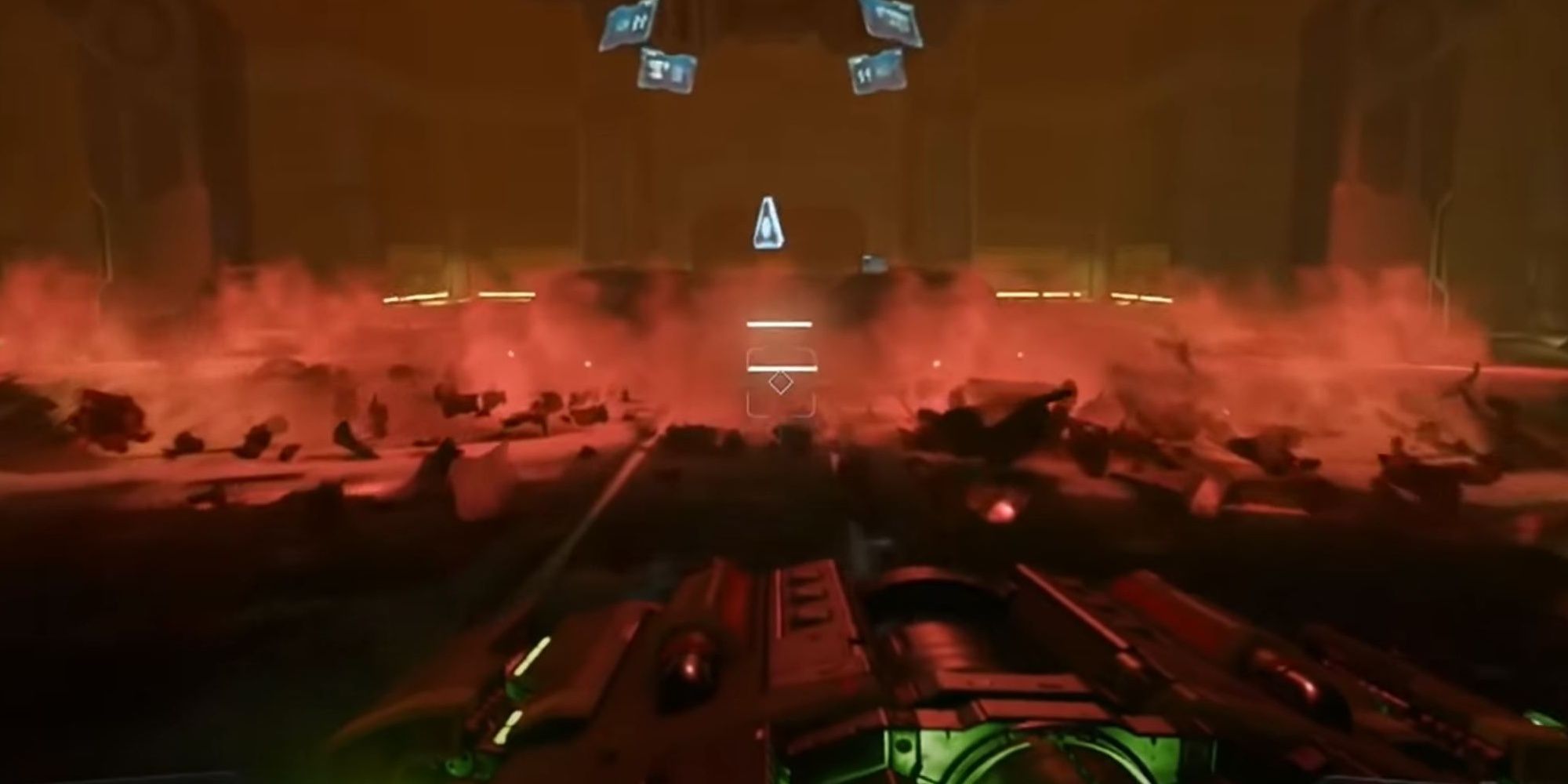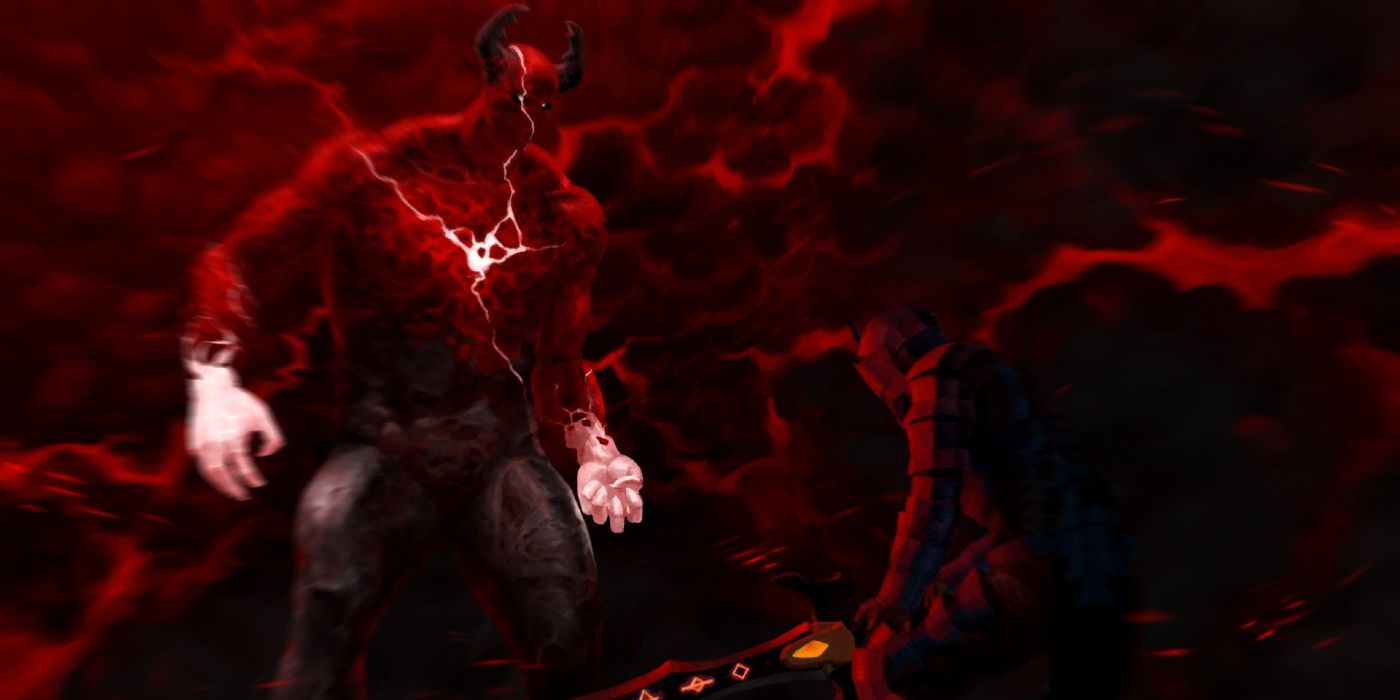
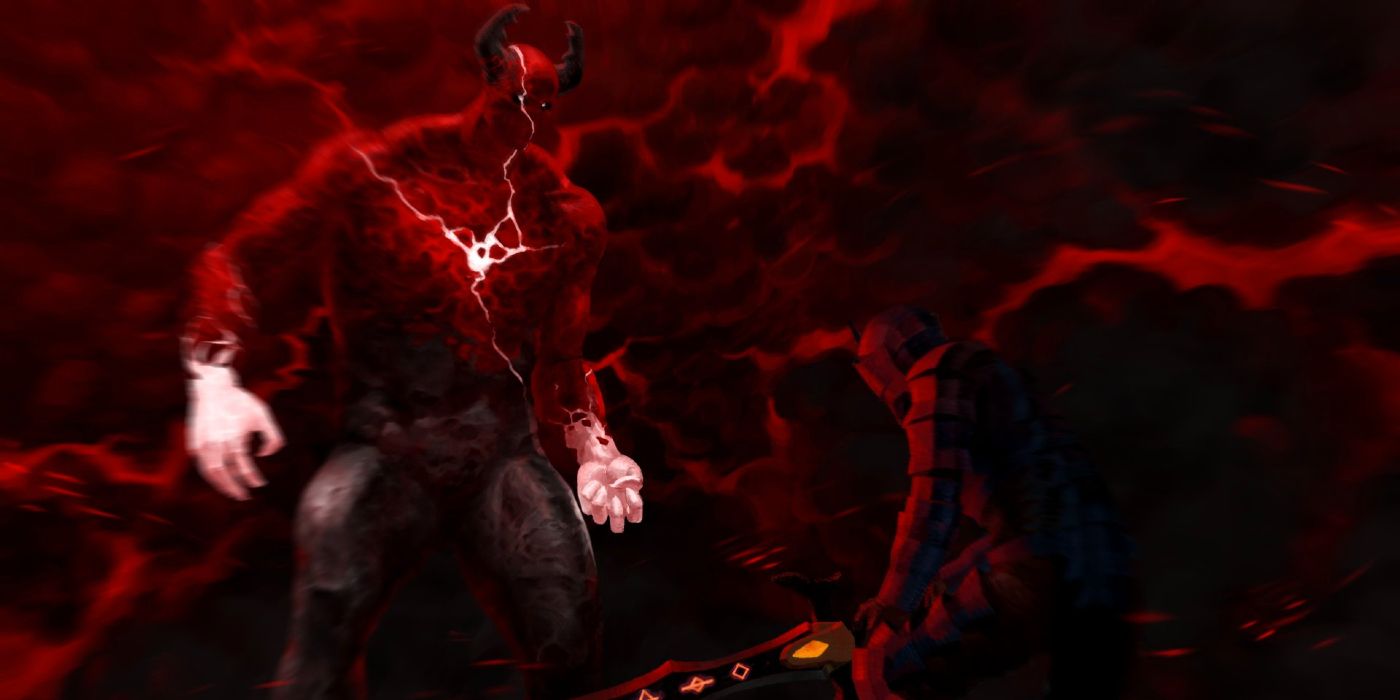
There are countless video game projects seeking funding on Kickstarter and similar crowdfunding sites every day. Success stories like Shovel Knight, Shenmue 3, and Yooka-Laylee show there are avenues outside of mainstream development studios – even if some games like Mighty Number 9 don't stack up to their promises. Young and eager developers are just as, if not more likely to take on the challenges of crowdfunding than established names like Keiji Inafune or Koji Igarashi. One example is British indie dev Kelechi Apakama, whose Skyrim-inspired open-world RPG Stormrite launches its Kickstarter campaign today.
Game Rant spoke to Apakama about the various influences that went into Stormrite and how he wants to improve upon their ideas alongside his small, international team. Interview has been edited for clarity and brevity.
RELATED: The 10 Most Successful Video Game Campaigns On Kickstarter (& How Much They Raised)
Q: Tell me a little about yourself and your history with game development.
A: I'm from the UK, the closest big city around me is Birmingham. I've been doing game development for about four years now. I basically started as a hobby a couple of years before I went to uni with a Python text-based game, trying to make something that looked kind of cool so I could show it to a couple of people. Then it kind of developed from there to making 2D games, into 3D games, making loads of prototypes but not really finishing anything.
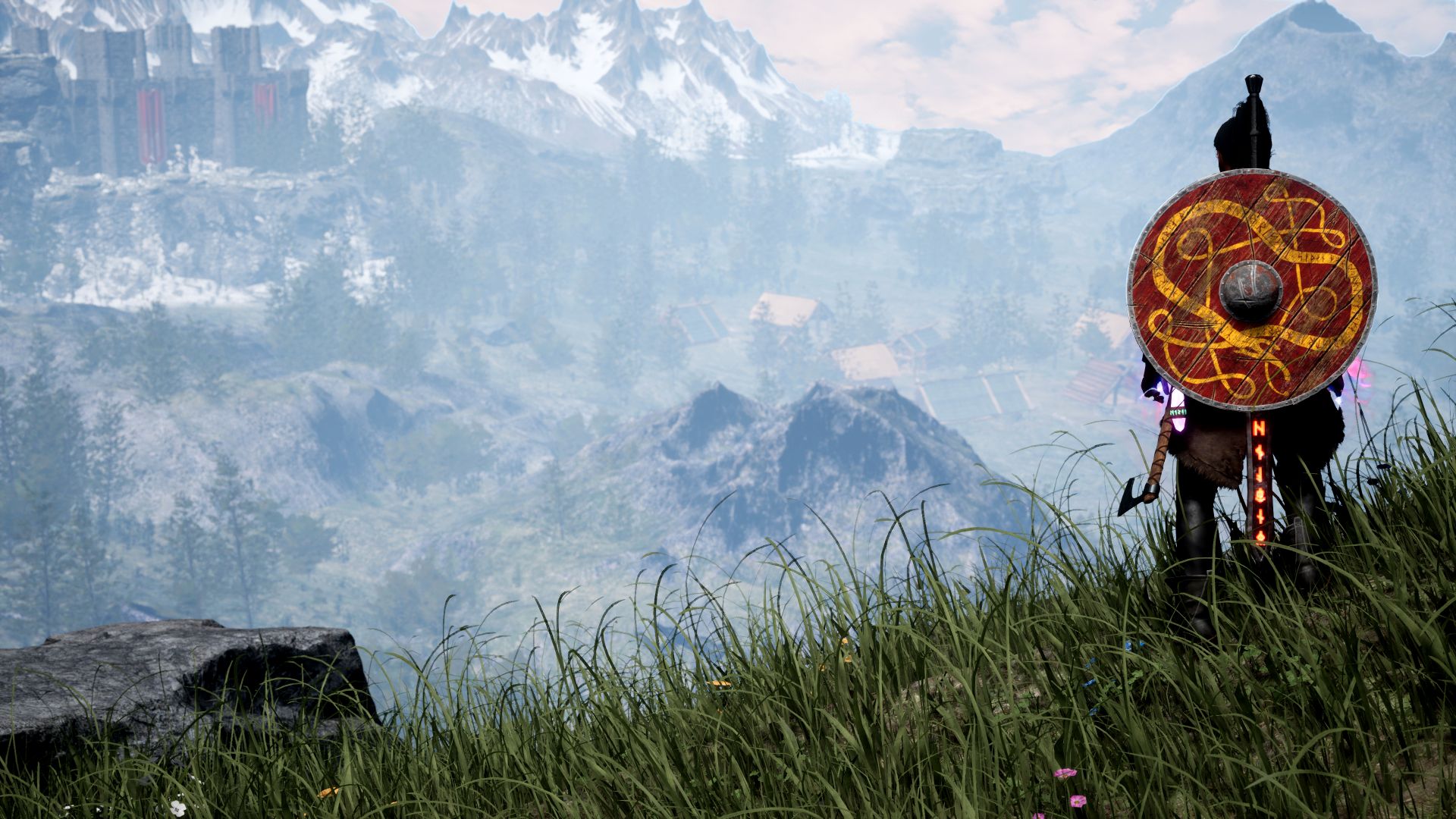
Then I finished my first proper game, it was called Pixel Invaders on the Google Play store. Its got about 100 downloads at the moment, not quite off the ground yet. That was just my first released project, after that I made a few more. One that gained a bit of traction on the Google Play store is called Keep It Up! Since then, I transitioned from mobile games into PC games, because I've always wanted to make PC games but I never really had the skillset. Once I was confident that I did, I started a couple of prototypes and Stormrite was the most promising one. It just kind of took off from there.
Q: Were you studying game development at university?
A: I'm still in university doing computer science right now. The course kind of helps with game development because it improves your programming skills, but it doesn't really help that much. Though I'm still very passionate about computer science, so I'm using that as a different avenue as well.
Q: So is your goal right now to become a game developer? Or if that doesn't work out, what's your plan?
A: The idea is definitely to become a game developer, and I guess if that doesn't work out I'll have the computer science degree to fall back on. Ideally, it is game development.
Q: You said Stormrite was one of many ideas you were prototyping, what else did you mess with?
A: I had a couple. One was a third/first-person shooter that I was kind of interested in, but I didn't really feel much passion about it so it wasn't going anywhere. I also started making a football (soccer) game, because that is my one passion in life: Football. I try to mix it with game development, and Keep It Up! was a football game on mobile. So I wanted to make a larger-scale one, but again I didn't really have the skillset or the team to do it. When I transitioned away from that, Stormrite was the first prototype that went well and got a lot of traction on Reddit.
Q: Where did the initial idea for this open-world RPG come from?
A: Well, my favorite game ever is Skyrim, so it definitely had a lot of weight in my decision to make an open-world RPG. Then it was literally me looking around at the stuff I thought I could make with the skills I had, and an open-world RPG was definitely possible. So I started prototyping the mechanics, and the art kind of on the eve of Stormrite's August 3 Kickstarter launch came later with my team further down the line.
But yeah, the idea was basically just because I love Skyrim.
RELATED: 10 Open World RPGs More Breathtaking Than Skyrim
Q: Skyrim was in a lot of my notes – I figured it was going to come up. So you shared your early ideas on Reddit, was the idea just to get impressions?
A: I've been following r/unrealengine for a while, seeing loads of cool people post cool stuff on there. I was thinking I want to get involved in this. I'd posted a couple of things before and they did kind of well, but I think my most upvoted post is the second one I put up there, it was a Stormrite prototype kind of thing. I just wanted to get involved with the Reddit community, and that was the way I did it.
Q: So you're making the game in Unreal Engine. Is there anything else you're working into it?
A: Unreal Engine 4 at the moment, we're going to transition to 5 over the next couple of months. Other stuff we use is just the typical 3D modeling software like Autodesk Maya and Photoshop. The main thing is Unreal Engine.
Q: Is there any kind of development timeline you're imagining for transitioning to Unreal Engine 5, and how it might impact the game?
A: Converting to Unreal 5 shouldn't add much time, in fact it'll definitely cut down on our development time. The transition would maybe take one month, but the tools we can use with Unreal 5… For example, we basically won't won't have to worry about polycounts and make multiple levels of detail for our meshes. All the technological advancements will save us so much time in the future that it will probably make the game come out quicker.
Q: Tell me a little about the people you're working with, and how you all came together on this project.
A: Initially it was just me for six months. I started in January 2020, and that August was the first time I released the game through a public test. In the notes of the itch.io page and the YouTube video I said I was looking for team members.
I'd been speaking to Kim Niemann, he's the lead artist now but I was speaking to him about it before and he was quite interested, quite enthusiastic. As soon as I said I was looking for people to join the project, he came to me as I was about to go to him, so it all fell into place at the perfect time.
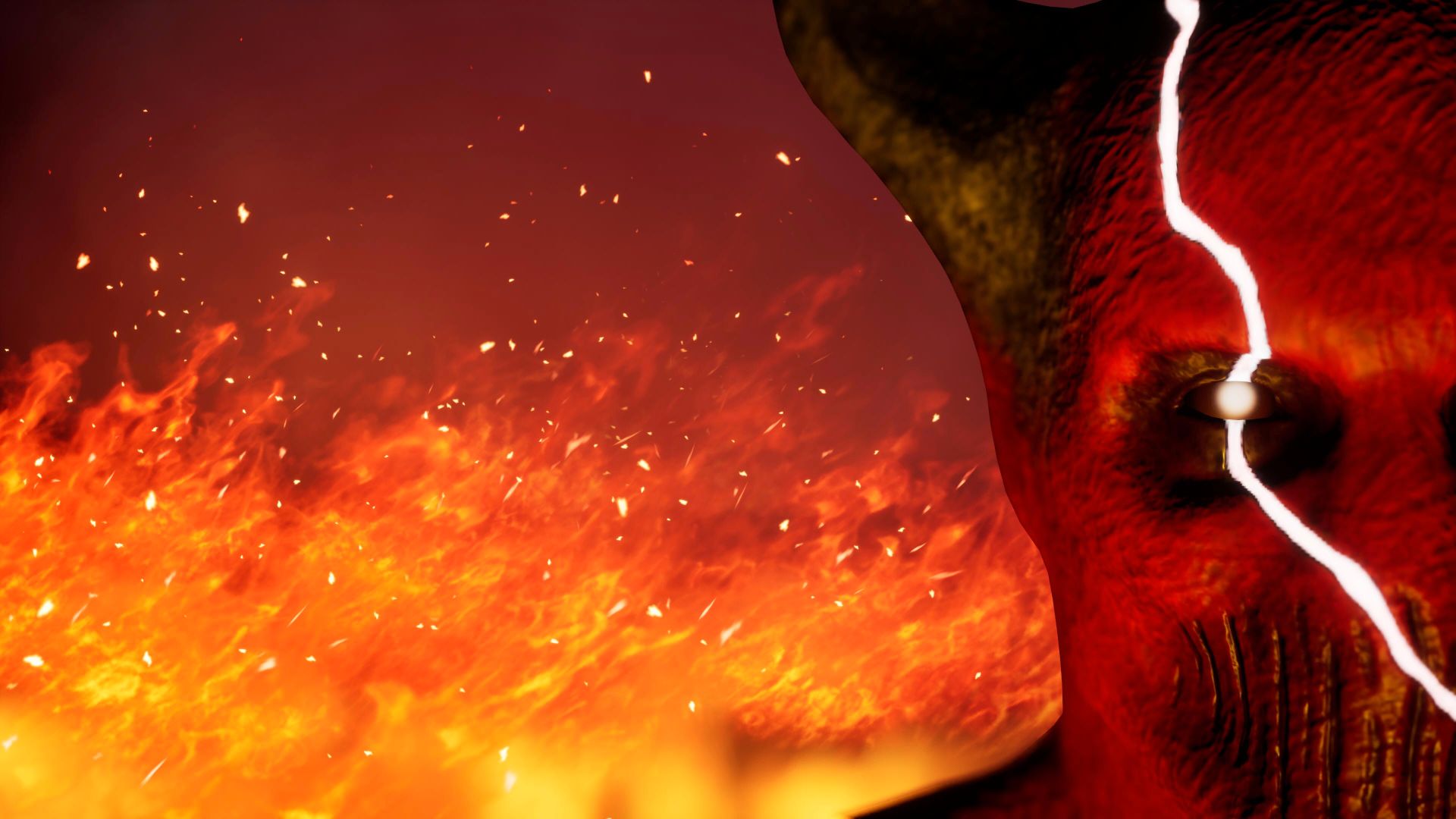
Joshua Castillo is our concept artist, I found him on Twitter. Very, very, very talented guy. He does basically all the 2D art for the project.
Then our final team member who I got quite recently, about three months ago, is Alex Ogrodowczyk. He's a character artist, he deals with most of the character art, armor, stuff like that. He's the one who made the Requiem, which you might've seen on our Instagram recently. It all just kind of fell into place naturally, I was looking for people and they came to me.
Q: You've said before they're based all around the world, what's the situation there with different time zones?
A: Kim is based in Australia, Alex is based in New Zealand, and Josh is based in America. We kind of get most of our work done in the evenings, which is good for me because my sleep schedule has been messed up by quarantine anyway. We have a Discord channel, emails, everything. It's all quite smooth.
Q: Speaking of quarantine, it seems lucky you were already poised to work remotely, but has the COVID situation affected your development in other ways?
A: I would honestly say Stormrite is the one thing in my life which has been helped by being placed in a quarantine situation. It kind of forced me to work on that, because I couldn't leave the house or be distracted doing anything else. I had to work on it for a large period of time last year, and then after quarantine I've been so used to working on it, it's so engrained in my time that I just did it anyway. So I wouldn't say it's really affected us at all. Apart from my sleep schedule, but that's fine.
RELATED: Square Enix Introduces Permanent Work-From-Home Plan for Employees
Q: If you're the main programmer and there are artists involved, have you gone to anyone for help with elements like narrative and music?
A: We have a composer named Andrew LiVecchi, he's very talented. He composed the two songs that are currently on the Stormrite soundtrack, and we're probably going to work with him and maybe one other composer to create the full soundtrack. We'll sort that out in a couple months' time.
Story-wise, I was writing most of it before, but I have one particular friend who does English and he's a very good writer who has done a lot of articles and stuff. He's quite talented and into fiction writing, so he's been helping me write the story, and it's going quite well. I've been able to offload a lot of stuff from myself to focus on programming.
Q: What kind of challenges have you come across working on this compared to your smaller mobile games before?
A: Performance optimization is definitely the main thing. Before I could do whatever I wanted and the game would run because at the end of the day it was a 2D mobile game or a 3D game with one character in a stationary level. It was quite easy to optimize.
With Stormrite we've got a fully open world, eight kilometers by eight kilometers-wide. There's a lot of optimization that has to happen and it has been hard, but it's been a very useful skill for me to learn, and it's going well. There's not been a lot of problems.
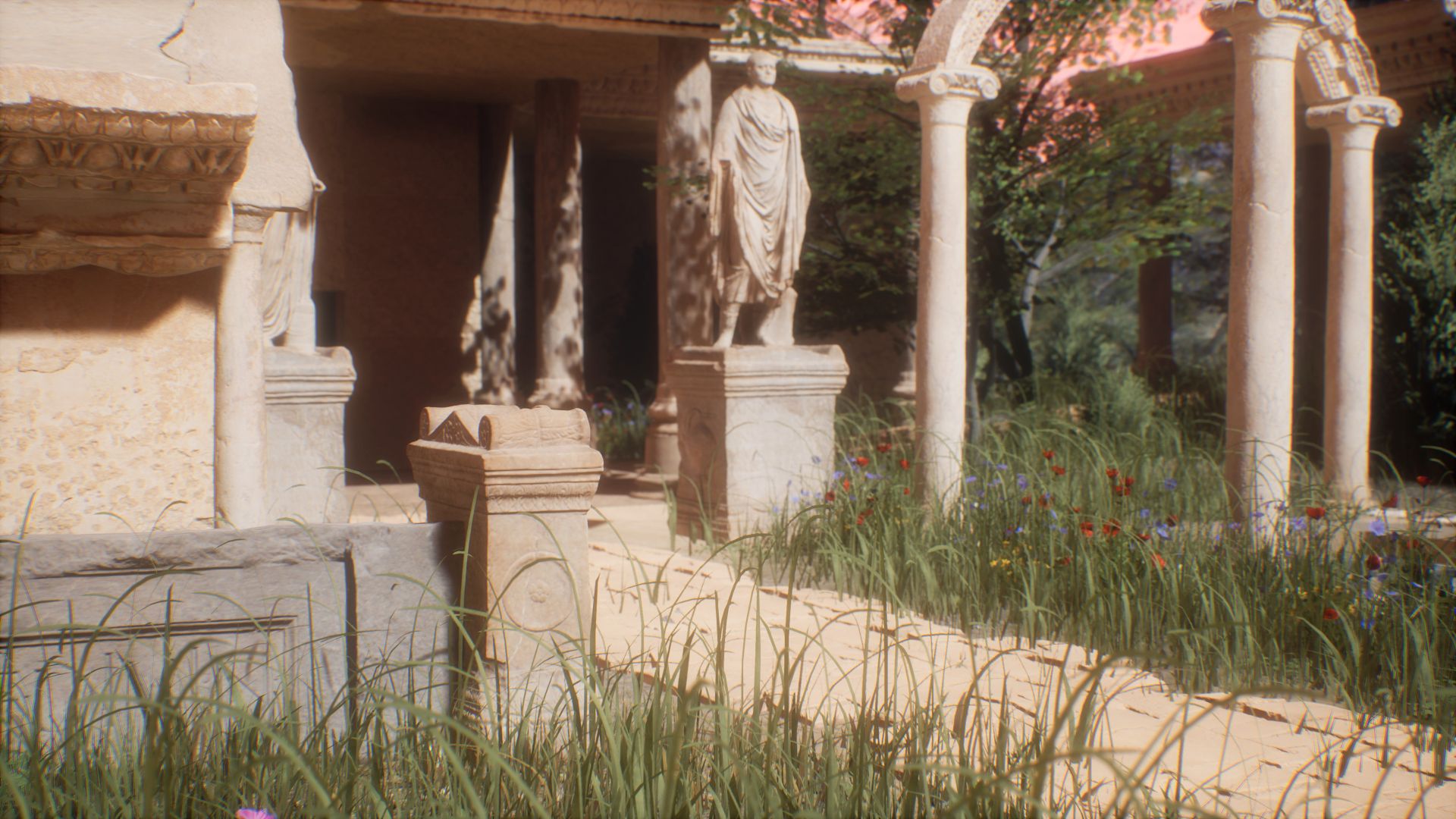
Q: How does that scale compare to something like a Skyrim?
A: I believe Skyrim is six-by-six kilometers. Yeah, it's about 37 square kilometers. Ours is 64 square kilometers, so it's a big task but we've got a lot of tools and methods to speed up the development pipeline and fill out areas of the map that I think weren't possible just five, six years ago.
Q: What are you doing to populate that world?
A: We're basically focusing on areas, cultures, and civilizations. Different areas of the map have different cultures, and right now we're working on the Viking/medieval-inspired civilization area. We're getting a lot of stuff done with the same theme so we can fill it in, move on to a different area, and take the world by chunks. I think that's the most efficient way to do it.
Q: How many of these chunks are you planning on having?
A: Probably about five, basically the four corners of the map and the center will make five varying civilizations.
Q: If one of those civilizations is the 'Viking' area, how different are the others?
A: I don't want to give too much away because it kind of affects the story, but the main one known about is Agrippa: a Roman-inspired civilization in the center of the map. There's lore about it on our website.
On the left side is Viking/medieval-inspired, on the right is something that we have plans for but I don't want to talk about right now.
Q: Beyond Skyrim, are there other inspirations from different games or media you're pulling from?
A: For the central Rome area, I'm basing a lot of it on Ryse: Son of Rome. I love it, it's the first game I ever got on my Xbox One actually, brilliant game. I think it captures a Roman civilization quite well, not that I'm much of a historian. I've been basing the structure and architecture of Agrippa on that.
Gameplay-wise, The Witcher's been another inspiration. I like the combat in The Witcher quite a lot, and the horse-riding as well. So I've been taking elements from that.
Q: A lot of your descriptions for the game talk about open quests and skill collecting. How much can characters differentiate themselves in Stormrite?
A: We're basically aiming for every questline to have multiple endings, because a linear questline feels like it's holding your hand and dragging you through the quest. You don't really have much choice on what to do. By different endings I don't just mean you can wind up 'here' or 'there,' it's a bigger scale. It gives replayability. At the end of the day, Skyrim's quite good because I can just play it and do something different every single playthrough, I don't feel like I've had my hand held through the whole game. That's what we're going for.
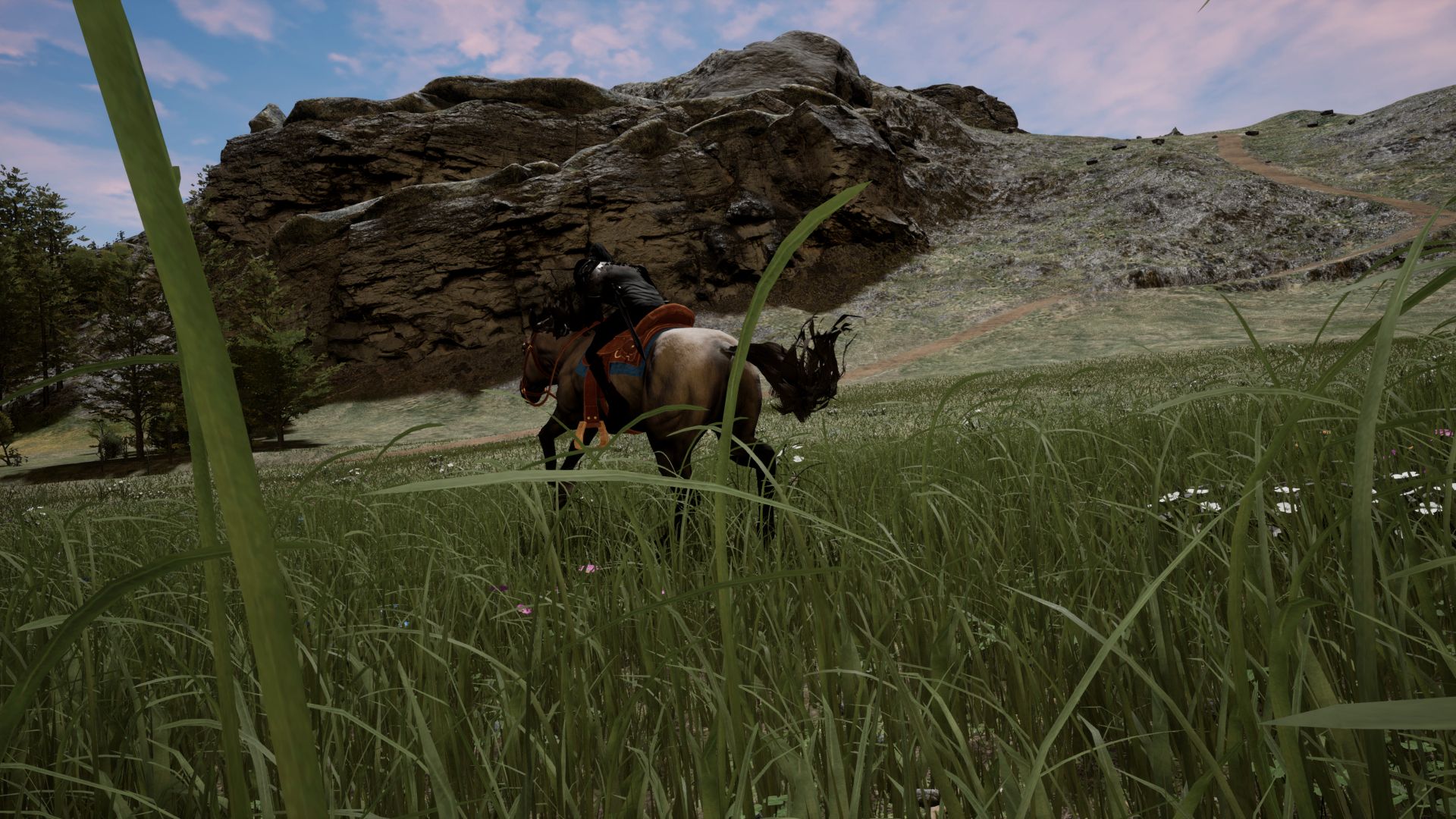
It's mainly happening through the skill tree. The skill tree will decide what you can do on quests, and the way the skill tree branches you actually won't be able to transition to something else if you've chosen something earlier. Not that it locks you into a certain path from the start, but you have to make decisions and think about what you want to do in the future at the start of the game. Then the next time you play, if you make a different quick decision at the start, it will give you a completely different way of playing the game. That's the philosophy behind it.
Q: Is it all combat-focused skills? Or is there a blend of diplomatic-type skills too?
A: There's obviously stealth, a combat focus, and there's going to be ways you can build relationships with different cities to help you in your travels. Or you can attack cities to become friends with other cities, that kind of thing. The way you interact with NPCs and different civilizations will impact the way your game plays out.
Q: Not that you have to spoil anything, but how much of an impact can you have? If quests have multiple endings, will there also be different endgame goals?
A: Again, I feel like I would give a lot away by going too deep into this, but there are a couple different endgame scenarios we've written out and we're trying to get one more for the main questline. We're going to have two, three, maybe four different scenarios you can end with. I know that sounds quite vague, but I don't want to go too deep into the details.
RELATED: Pokemon Brilliant Diamond and Shining Pearl Should Bring Back This Endgame Feature
Q: Are there elements you're looking to improve upon from your inspirations like Skyrim or Ryse: Son of Rome?
A: There are definitely a lot of elements I'm trying to improve on. Whenever I look at a mechanic from a game, I never want to take the mechanic – no matter how good it is. That's not creative, that won't give a different player experience. We still try to improve upon the mechanic in some way if we take inspiration. Not that we do that quite a lot, we've obviously got our original ideas.
The main thing we're trying to improve on that we see too much in magic-based combat is the mana bar. It's like I've got this mana, I don't know where I've got it from, and it keeps regenerating no matter how much I use these spells. There's not really an explanation where it's come from and why you have powers. In Stormrite, no human has magical powers. Every human character is a normal human, but there's energy in the world given by focus crystals. If you get these focus crystals you can draw energy from them to cast your spells, but you have to have one on you at all times in combat, and you can only cast spells after you've drawn mana.
It puts you in the game world thinking, "I need to make sure I have magic because I'm not actually special in this world." I feel like that's a major improvement on the typical mana system you get in magic-based combat.
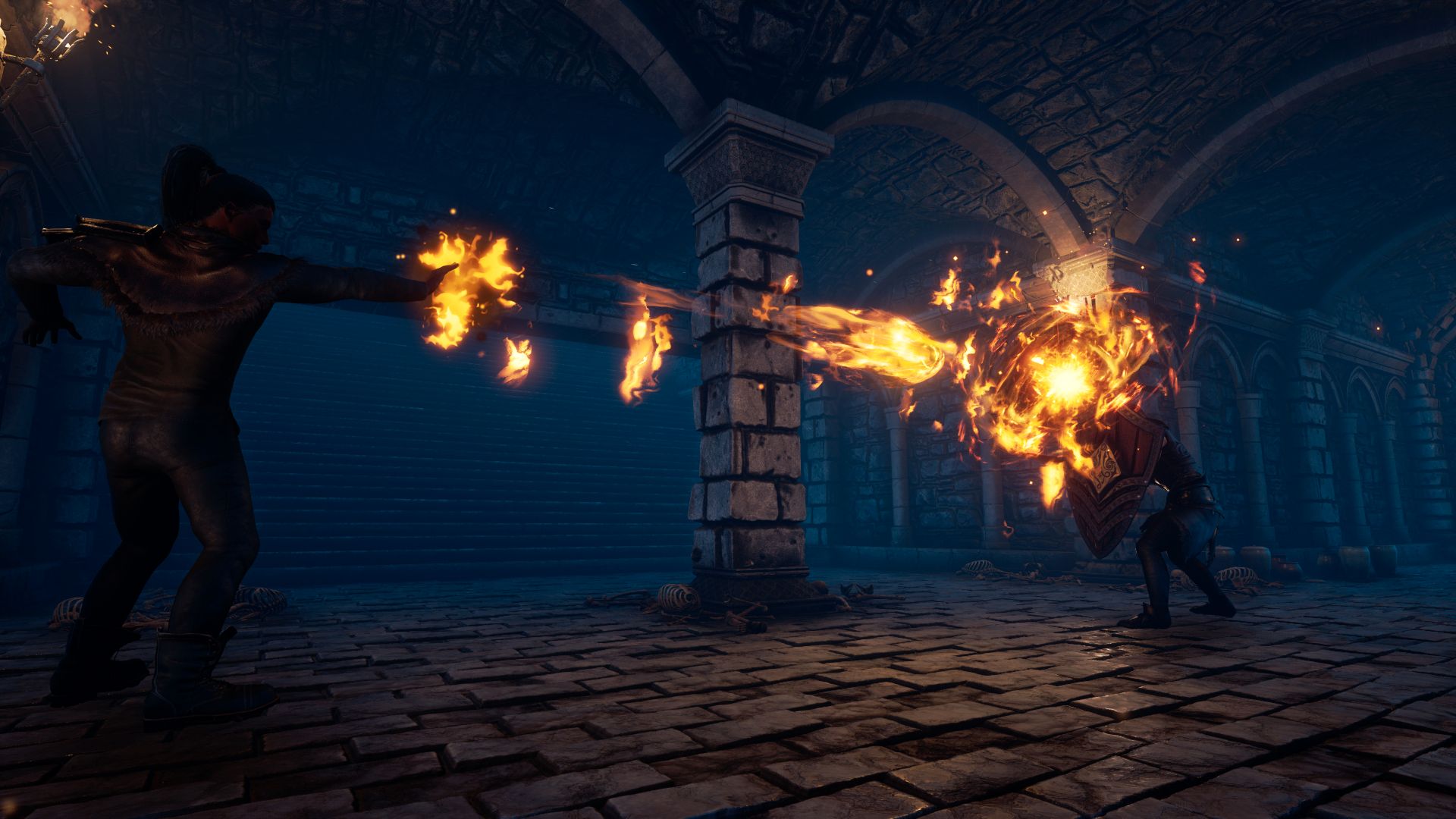
Q: Are resources like these crystals limited? Will players have to figure out how to survive if they run out of mana?
A: You'd have to go and find, or potentially buy these crystals. But every crystal has a limited amount of energy you can draw from it, so if your crystal runs out mid-way through battle and you didn't bring another one, unless you have another way of fighting you've just got to run away. You've got to think and plan ahead to what you're doing.
Obviously there's stronger crystals in the world that can give you different powers, but they have to be found. They can't be bought or found in quests, you have to go out and find them yourself.
Q: Looking at the clip you sent along, there's a moment in the trailer where a player seems to cast one spell and then another into it. Is that mixing spells or just the fanfare for one attack?
A: That is a mechanic we've done about 30 percent of code-wise. Most spells will be able to mix with each other. In the trailer it's a void orb you fire and an arcane missile into the void orb. If you hit the orb, because it goes quite slowly and it's quite big, the idea is you chain up your spells so it will do some damage around the impact and send a more powerful missile through.
So spell mixing is definitely something we're doing in the game, and it's going to be there as much as it's a gimmick for the trailer.
Q: How big a scale are you expecting on that?
A: Spells that make sense will work together. So two spells that go at the same speed will never really be mixed. If you're shooting one out of the left hand and one out of the right hand at different times they're not going to collide. Most spells will be mixable, but some will just phase through each other because it wouldn't make sense to mix them.
Q: Mentioning that, is two-handing weapons a big mechanic for the game?
A: Well you can do that with spells, and we're planning on doing that with melee weapons. That was meant to be added a couple months ago, but we decided we didn't need it at the time. It will definitely be added before the game releases.
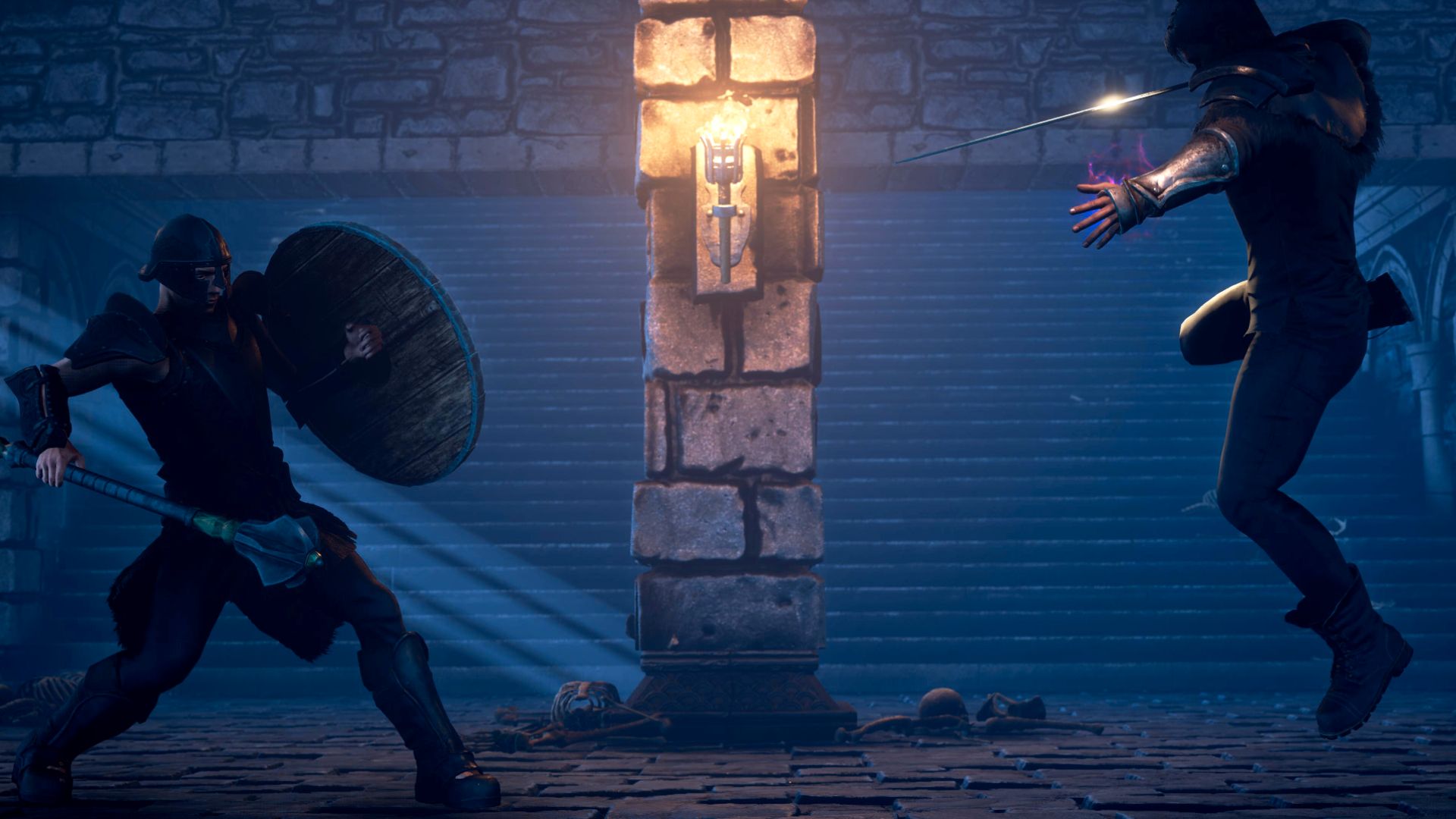
Q: How much variety will there be in the kinds of weapons you can wield?
A: We've got a fair few weapon classes: spears and polearms, two-handed weapons, one-handed weapons. In those categories you'll have axes, maces, hammers. There's going to be plenty of variety and different weapons will attack at different speeds, do blunt or sharp damage, stuff like that.
Q: What other ways are you planning on standing out from the big open-world RPGs that exist already?
A: The Stormrites are another big part of the game, the way Stormrites are acquired and protected and held. But again, I don't want to go into it too deeply. There is an article on our website about it, but that's pretty much all the information we'll be giving before the release of the game.
I think when you make an open-world RPG, the main selling point is the story. If the story is great, the combat usually still has to be good but the story will set it apart from other games. That is one area we're focusing on, story writing. We're going to get a couple more writers on board, get everything properly written out and done to the best of our ability. That is going to be the main selling point, essentially.
Q: I know you have a Patreon running with rewards like access to early builds. How long have you been operating that, accepting money to help development?
A: The Patreon started, I believe, when the first public test started in August 2020. The idea of the Patreon was there were very dedicated members of the audience who wanted to give in some way, but the Kickstarter was far down the line. But they wanted to give in some way, and I wanted to give something back to them for being so loyal.
The costs weren't too much, I was able to afford the cost out of my own money. I just wanted to give back to the loyal fanbase. Now, I'm going to shut down the Patreon as the Kickstarter launches because we won't really need it – of course, if the Kickstarter reaches our goal, which we hope and plan for it to do.
Q: Well not to put a bad omen on it, but if the Kickstarter doesn't work out will you continue working on the game in this capacity?
A: Oh 100 percent. Development won't slow down at all, it's just the Kickstarter would accelerate development. We can still gather funding from other sources, Kickstarter isn't the end-all-be-all. The game will still come out if the Kickstarter fails, but the Kickstarter will help quite a lot if it succeeds.
Q: So that being said, what are you hoping to get through this Kickstarter? What will accelerate development?
A: Hiring more team members, either on a contract or permanent basis. There's areas of the game where if I cover eight things, I could hire someone else to cover two, and another person to cover two, then I can put my effort into the four remaining that I have. It's allocating resources and tasks, getting everyone together in a cohesive unit to hopefully make the game progress a lot quicker.

Q: How big of a team are you hoping to get?
A: We have three areas we'd like to hire for at the moment, and after that it'd just be hiring more people to get stuff done quicker. I'd say there's two necessary positions that need to be filled, but even if they aren't filled now they can be filled in the future. We can do the work for those roles until we hire someone.
Q: What kind of special rewards are you planning to give to Kickstarter backers?
A: There are a lot of rewards. We've put some time in thinking about what people will really want from the Kickstarter. You can get a vinyl of the original soundtrack posted to your door, you can get a 3D model of Requiem painted and sent to your door, you can get a statue of yourself in the game. In Agrippa there's an area called Heroes' Walk, which is blank at the moment so we can put statues of high-level backers in there as a thank you, immortalize them into the game world.
There's obviously digital release keys, digital wallpapers… Plenty of stuff, and in-game rewards as well. All that will be on the Kickstarter when it launches.
Q: Are there also stretch goals for things you might want to add into the game?
A: We have some stretch goals. Obviously we won't talk about them now, but if we get past our funding goal they will be released to the public.
Q: The game's currently being developed for PC and Xbox. Is that next-gen? Or just Xbox One?
A: Definitely next-gen, and we're aiming to make it possible for Xbox One as well. We understand a lot of people can't afford to upgrade, so the plan is to cater to them.
Q: Is there a reason you haven't also gone for PlayStation?
A: At the moment, I don't know, I had my eyes set on Xbox initially because I have an Xbox and I prefer it from a personal standpoint. But obviously I would be more than willing to release on PlayStation if we get to that point, it's not out the window. At the moment, the only platforms confirmed are PC and Xbox.
Q: Is there anything about working on next-gen consoles that really interests you?
A: There's a lot of really good features on the Xbox Series X and S that we're trying to exploit in Unreal Engine, especially Unreal Engine 5. One thing is the time it takes to load in areas of the game is much quicker, which is perfect for an open-world RPG. That's something we're trying to use to our advantage.

Q: How helpful have fans and others been as far as testing the game, offering feedback, etc.?
A: We wouldn't be here without them. In our public test the feedback was insane, we had a Google form coming through with minor and major things, everything that needed to be added, even suggestions for features. In the Discord there's constant discussion about features, feedback. Then the internal testing track has been even more helpful because they're dedicated to the game, love the game, and want to see it progress. They give all the feedback they can, and we take all of it into account to make Stormrite the best game it can possibly be. You really need a good testing base to make a game, especially something as bug-prone as an open-world RPG.
Q: Are you still planning on taking that advice if your audience grows a whole lot bigger after this launch? Maybe filtering it in some way?
A: Yeah, at that point you do have to start thinking about which feedback is possible, which feedback is useful. I think every bit of feedback is useful, but which bits are more useful and can be put in the game. We will have to start filtering things, of course, if the audience gets too large.
Q: Are there any examples of feedback you've gotten that made big, prevalent changes people can check out in the game?
A: One I can think of is the particle sound effects for the spells were a bit off at some point, and the ice sounded like an ice cube being slid across a table. It was very bad at the time, I don't know why I added it to the game. Then in the internal testing track they gave us some suggestions, said maybe we should put a glass breaking sound effect in there. I thought that was pretty good, so I took all their suggestions into account and now the ice impact sounds amazing. Those ideas wouldn't have come into my head if it wasn't for those guys.
Q: Anything else you want to add?
A: The announcement is happening on the third of August, the official announcement of the game coming with the trailer. This is really our statement that the game is coming out and you should make sure you keep it on your radar.
[END]
Stormrite is in development for PC and Xbox, and can be wishlisted on Steam. Its Kickstarter campaign goes live today.
MORE: Cloudscape Interview: Konitama Developer Discusses Bringing 'Dream Game' to Kickstarter
Source: Kickstarter
